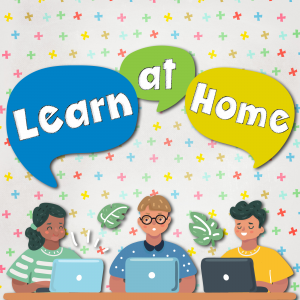This post is part of a blog series: 9 Strategies for Successful Reading
Have you ever helped your child with a reading assignment only to discover that they did not understand what they just read? Have you noticed your child can read the words just fine, but has trouble comprehending what they read? This is more common than you might think!
If you haven’t read part one of the series, please read Strategy #1: Prepare.
Strategy #2: Making Connections and Background Knowledge
This strategy is a powerful one that draws upon everything your child already knows and has experienced.
Have you ever read a book and thought, "This reminds me of…" and then been even more interested in the story? That is making a connection! Your kids can also make connections to their own lives, to other movies and books, or to what is going on in the world. They can take that knowledge and connect it to what they are reading.
Making connections is like building a bridge between what they are reading and another part of their world.
The connections are made in three ways:
Text-to-self
"This reminds me of when X happened to me!" Readers can make a connection between what they are reading and their own lives. For example, if the main character of the story gets in trouble for talking in class, but he didn’t do it, it might make your child think of a time in their own life when they were unfairly punished for something they did not do.
Text-to-text
"This reminds me of that scene in X movie!" Readers can make a connection between what they are reading and another book, movie, or TV show. For example, if the book your child is reading takes place in space with battles between good and evil, it might make them think of the Star Wars
Text-to-world
"This reminds me of X going on in the world!" Readers can make a connection between what they are reading and the world around them. For example, if your child is reading a story about a kid who bullies another kid, it might make them think about how bullying is a problem at their school and in other schools.
Background knowledge is included with making connections because it is very similar.
If your child is struggling with a text, ask them to think about what they already know about the subject of the reading, the author, the genre, or anything else. For example, if they have to read an article for school about climate change, have them think about what they have already heard or learned about the topic.
They might be pleasantly surprised to realize they know quite a bit! Going into the reading with some previous knowledge will get their brain firing and make it easier to comprehend the text.
About this blog series
We’ll go over 9 strategies in this series of blog posts. Your child might not need all nine. One might work magic! If you are a good reader and haven’t ever thought about how you read, you might be surprised to discover you use some or all of these strategies.
And again, a reminder that good readers are not smarter than readers who struggle. Not at all! Many highly intelligent and successful people have struggled with reading, and they became good readers. What they do, and what all good readers do, is develop habits and strategies that help them comprehend what they are reading and give them skills for when they get stuck.
Next time: Strategy #3: Asking Questions
Visit Learn at Home for even more great resources, including:
- Free online tutoring
- Online tools available 24x7x365
- Recommended items from our collection that you can pick up curbside



